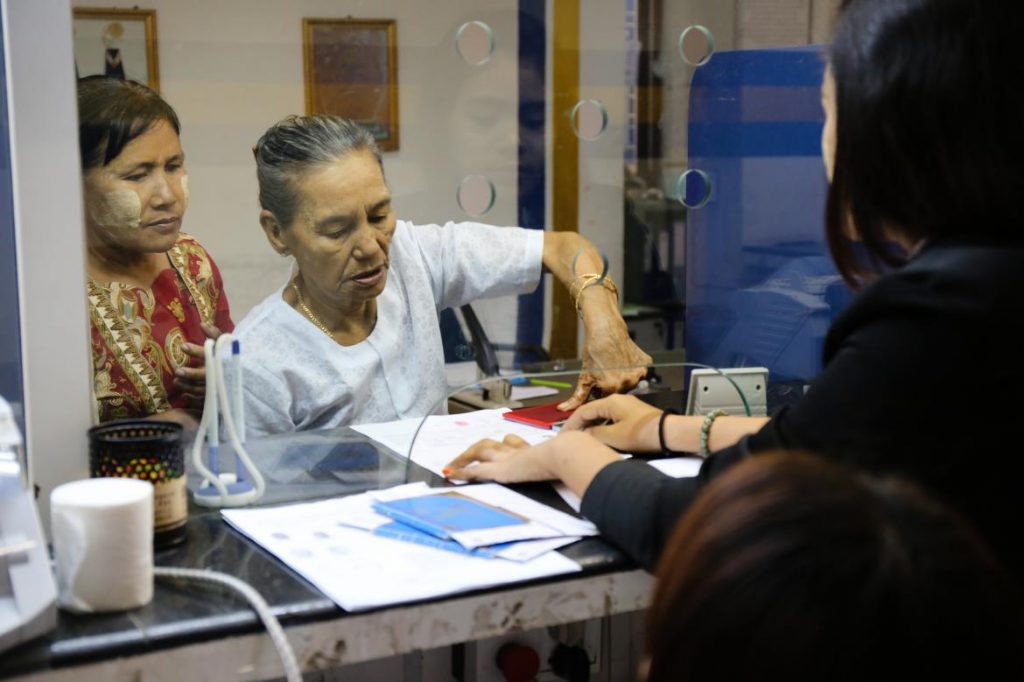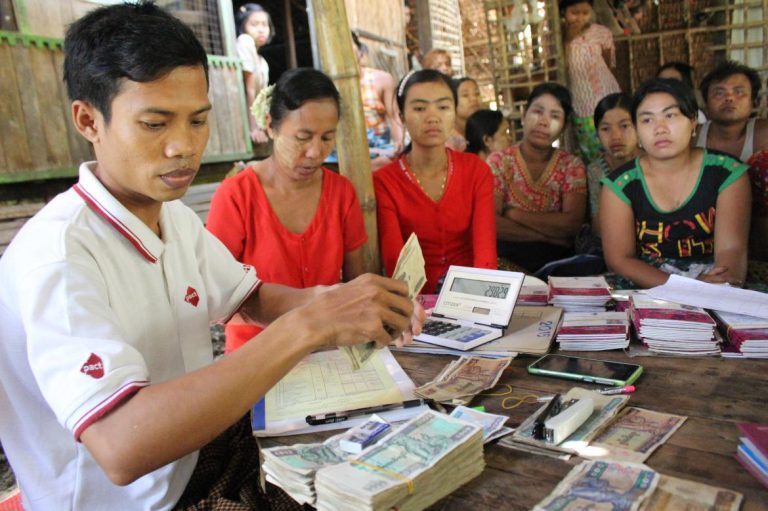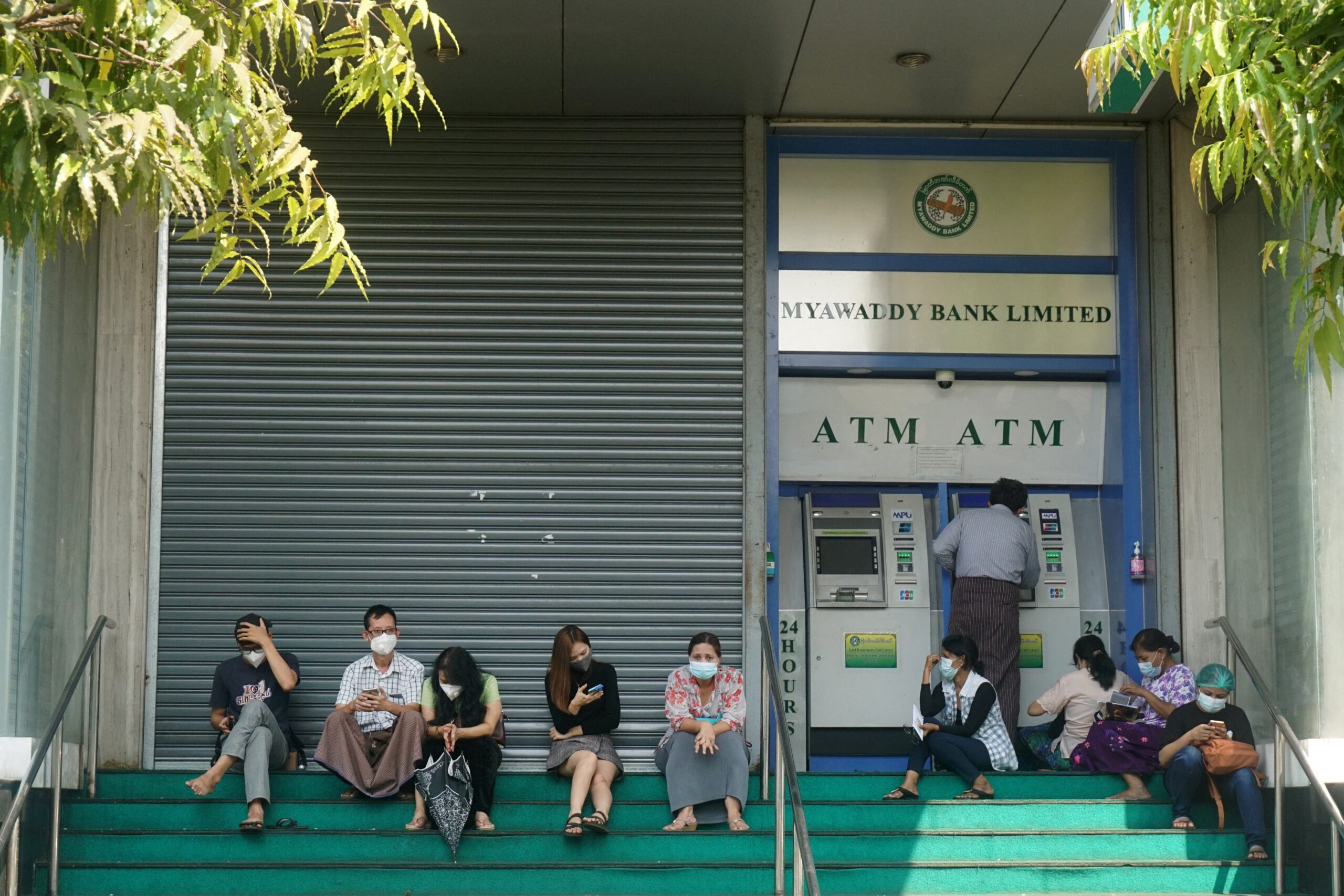Microfinance lenders have broadly welcomed regulatory changes that will help them to increase equity and satisfy the huge demand for credit.
By THOMAS KEAN & HEIN KO SOE | FRONTIER
RECENT REGULATORY changes are set to spur growth in the microfinance sector, industry sources have told Frontier, although the full impact may not be felt for some time.
Myanmar’s microfinance institutions are starved of equity and this restricts their ability to meet demand for loans. In 2012, the United Nations estimated that unmet demand for credit was more than US$1 billion.
The changes, announced on August 29, will give microfinance institutions greater flexibility in offering loans and allow them to take more in deposits. Together with changes to liquidity and solvency ratios, and sources of loans, the new rules should enable MFIs to offer more credit to Myanmar households.
The reaction from the sector to the changes has been broadly positive, but some want the government to go further in relaxing restrictions.
Support more independent journalism like this. Sign up to be a Frontier member.
Mr Michael Schlein, CEO of Accion, which holds a 40 percent stake in Dawn Microfinance, said the changes went some way toward improving access to capital, which has been the sector’s “biggest policy need”.
“The new directives level the playing field and allow all MFIs in Myanmar to borrow funds from local and foreign sources and in local as well as in foreign currency,” he said. “The directives also allow MFIs to take voluntary savings from their clients, which has been suggested by the microfinance sector for some time, with more flexible limits that in the previous directive.”
Schlein said the directives will likely trigger further discussion in the industry and may even lead to further adjustments by the government’s Microfinance Supervisory Committee.
“We hope that the microfinance community, in particular the MFIs, are given an opportunity to opine on these new directives and help the government further strengthen and implement them.”
The first of the five notifications issued by the supervisory committee relates to a set of “Client Protection Principles” aimed at avoiding over-indebtedness and providing responsible financial services. The principles are the same as those advocated by the Washington-based Smart Campaign, a global effort to unite microfinance leaders around the common goal of client protection.
Ms Elisabeth Rhyne, a co-founder of the Smart Campaign and a member of its steering committee, said it was “very significant” that the new directives put client protection first. But outlining the principles is “only the beginning”, she said; each principle would also need to be backed by standards of practice “that translate them into operational terms”.
“[The principles] call for transparency, but what does it mean to be transparent? For example, how and when should interest rates be communicated? That’s where standards of practice come in,” she said. “The Smart Campaign advocates that standards be developed in dialogue, so that they are workable for providers while satisfying regulators that clients will be protected.”
The second notification enables registered microfinance providers to take loans in either foreign currency or kyat, where previously foreign MFIs could only access foreign-currency loans, and domestic MFIs, kyat loans.
They must still receive prior approval from the supervisory committee and Central Bank of Myanmar for the loans – a process that currently takes several months.
The third removes a previous restriction that loans offered in urban areas must not exceed those in rural areas. However, those who focus on rural areas – where there is still great demand for credit – will receive unspecified advantages.
“MFIs may carry out microfinance activities in rural and urban areas based on their business models,” the notification says. “However, operating in rural areas is encouraged. MFIs operating in urban areas are not allowed to enjoy the advantages offered to those operating in rural areas.“
Ma Htet Htet Aung, a credit manager at ACLEDA Microfinance Myanmar, a subsidiary of Cambodia’s ACLEDA Bank, said lifting restrictions on urban lending was a positive step.
She said there were fewer eligible customers in rural areas and the cost of lending to them was higher. As a result, the previous policy restricted the amount of credit that was being made available to urban households.
The fourth relates to accepting deposits and capital requirements for institutions. Previously MFIs could require clients to save 5 percent of their loan, and accept voluntary deposits up to another 5 percent.
The cap on voluntary deposits has been lifted – provided the MFI continues to meet solvency ratio requirements – and the interest rate on these deposits has been set at a minimum of 10 percent a year. Previously it was 15 percent – almost double the commercial bank rate of 8 percent – making it expensive for MFIs to accept deposits.
However, there’s a catch: to qualify as a deposit-taking institution, MFIs must have been operating for three years and be able to show profits for two years. Few, if any, MFIs are likely to meet this requirement at the moment.
Deposits can also still not be accepted from non-members – a restriction that will likely protect commercial banks from losing customers to MFIs.
Paid-up capital requirements have been raised from K30 million to K300 million for deposit-taking institutions, and K15 million to K100 million for non-deposit-taking MFIs.
This has been welcomed by established MFIs, which felt that the capital requirements were too low and had resulted in some sub-standard operations.
The fifth notification relates to solvency and liquidity ratios.
ACLEDA legal department manager U Min Aung said the reduction in both ratios would help MFIs extend more credit.
“Another important change is that all MFIs can borrow from local commercial banks to get more capital. This should make it easier for us to lend to more clients,” he said. “Generally, the new rules will encourage the growth of MFIs in Myanmar by relaxing some of the restrictions.”
Ms Julie Earne, a microfinance expert at the International Finance Corporation with extensive Myanmar experience, said the new directives were “significant”, particularly as they were based on a proposal submitted by the Myanmar Microfinance Association, which acts as a “voice” for the sector.
Further policy changes to widen access to funding for MFIs were needed, she said, as well as a strengthening of regulatory capacity.
“This is a good start, but more is needed,” Earne said. “There is still a 13 percent cap on the price MFIs can pay for borrowing in kyat, which is uneconomic for most lenders.”
Title photo: A customer puts a thumbprint onto a loan agreement at the Yangon office of ACLEDA Microfinance Myanmar. (Victoria Milko / Frontier)







